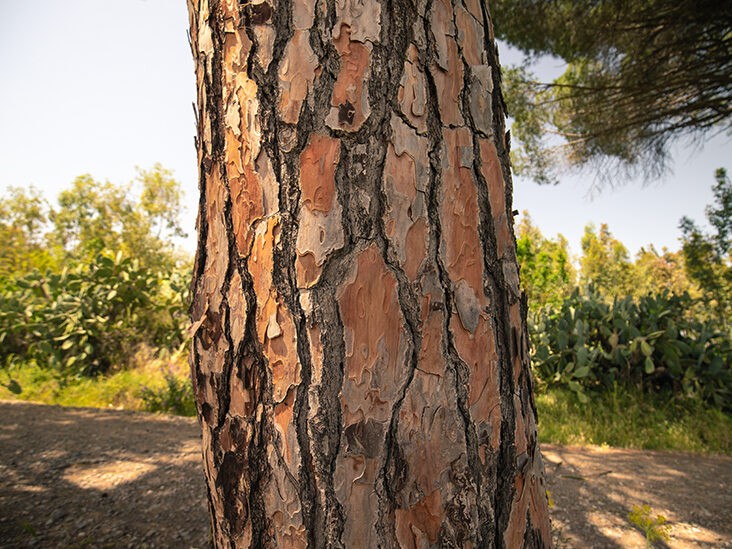Pine bark is one of the best-selling mulch formulas in our country. Easy to find in garden centers, it is used in the beds at the foot of shrubs and other ornamental plants.
Contents
What is bark mulch?
Bark mulch is made of maritime pine bark, as its name indicates. It is generally produced in the southwest of France. Once the trees are cut down for various uses, their bark is removed and recycled.
This mulch is then packaged in bags that can be found in most garden centers and even supermarkets. Pine bark can be used as mulch or in the composition of mixtures, especially for orchids.
Specificity of pine bark mulch
Pine bark has an acidic pH (4.5) and does not decompose quickly. They are therefore ideal for mulching the base of plants that appreciate a rather acidic soil such as azaleas, rhododendrons, hydrangeas and all other heathland plants. A 10 cm mulch will take several years to decompose, which makes it both an economical and long-lasting solution.
Once installed, this mulch does not fly away and stays in place without blocking water or gas exchange because it is relatively airy.
We often read that bark mulch is not suitable for certain plants because it is said to acidify the soil too much. However, studies conducted in recent years tend to prove that this is not the case. This can be explained simply by the ‘buffering capacity’ of the soil, i.e. the number of ions in reserve on a clay-humus soil. Thus, humus-rich soils, whether clay or limestone, block pH variations. These studies have proven that the influence of pine bark is lesser, the only decrease in pH observed is in soils that are already acidic.

Interest and uses of pine bark mulch
As we have seen, bark mulch provides very long-lasting protection for plants because it is resistant to wind and the elements.
Spread in a thick enough layer, it blocks the growth of unwanted weeds that would otherwise compete with your ornamental plants. Another important function is to prevent evaporation, which means less watering.
Well protected, under the mulch, the small animals work in the shade, making the soil loose and fertile but also very aerated.
The plants thus mulched will be much more vigorous and will bloom more abundantly, without forgetting that their roots will be protected from frost in winter.
Mulch with pine bark chips provides ideal conditions for pine needles to decompose, as it does not inhibit this process. Decomposing pine bark chips create an acidic environment that is beneficial for many plant species. This acidic environment helps prevent weed growth and promotes the growth of beneficial microorganisms within the soil. Additionally, decomposing pine bark chips produce carbon dioxide and water that promote the growth of aerobic bacteria. This creates a favorable environment for healthy plants anywhere you place mulch from pines.
Mulch with pine bark chips offers several other benefits for the surrounding landscape. Allowing pine bark chips to decompose can reduce maintenance requirements significantly. Once decomposed, this mulch produces no more nitrogen or other nutrients for plants to absorb into the soil. Furthermore, using mulch with pine bark reduces potential wildfire risks since there is less combustible material remaining from the trees after processing pines into chips. Additionally, reducing potential wildfire reduces environmental impacts caused by this activity as well as reduced habitat loss due to fire suppression activities
Using pines’s leftover scraps as mulch requires virtually no maintenance and has many other long term benefits for the landscape. Most homeowners who use this method do so temporarily while their landscaping projects wait to be completed. After landscaping projects are complete, homeowners will spread their leftover scraps from these projects around their gardens or outdoor spaces as mulch to promote quick garden establishment times. This method has few drawbacks because there is virtually no maintenance required once it’s implemented; it just takes some time for it to take effect once left out
Pine trees are abundant in many parts of the world and they provide several benefits for landscapes and ecosystems alike; however, leftover pine scraps can also be used as effective mulch when applied appropriately. Pools that have added pines’s scrap wood around them have more than just aesthetic value; they also provide food sources such as mosquito larvae that keep these pests at bay!


